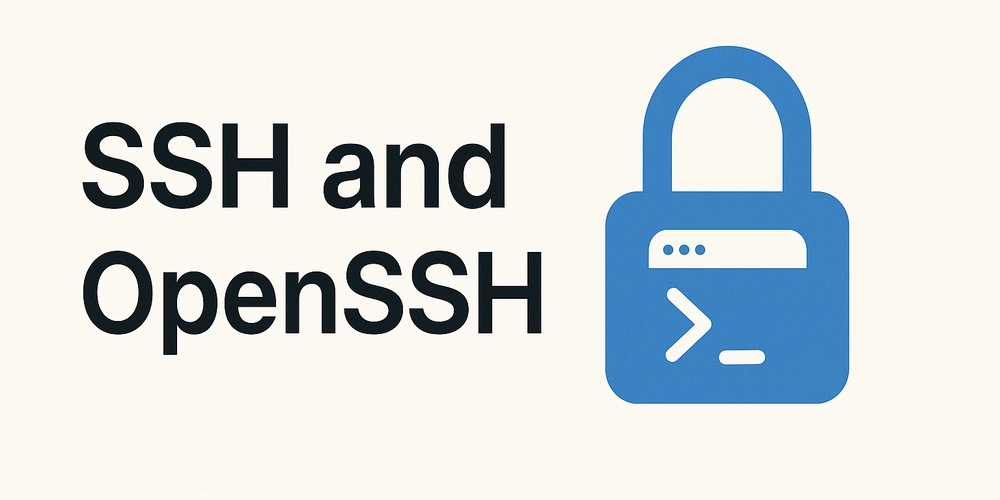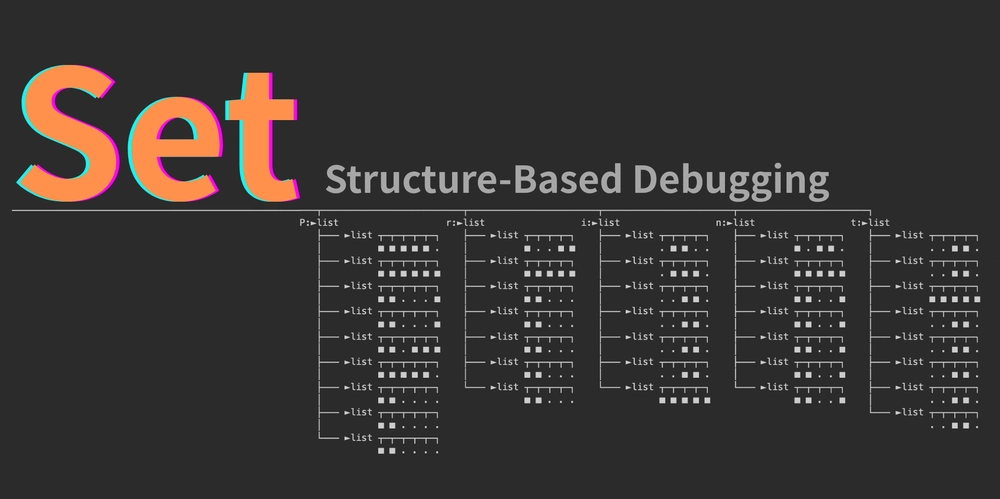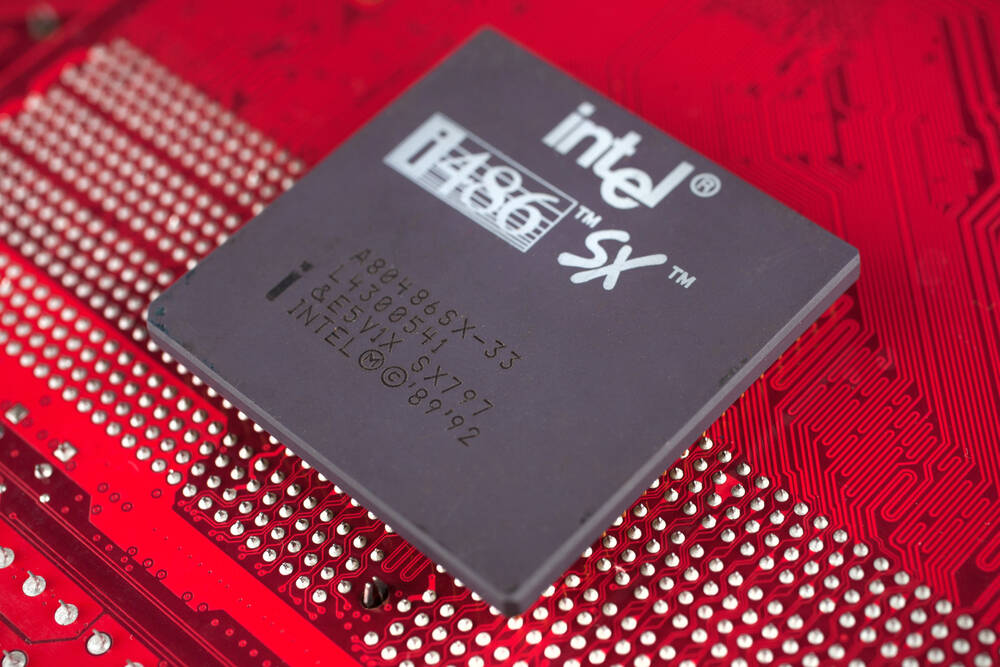SSH and OpenSSH Overview: Secure Remote Access for Linux
Table Of Content Introduction What is SSH? What is OpenSSH? Key Components of OpenSSH How SSH Works The Security Importance of SSH Best Practices for SSH Security Why SSH Matters for Your Linux Challenge Conclusion Introduction As part of my 30 days Linux challenge, understanding SSH (Secure Shell) and its most popular implementation, OpenSSH, is essential. SSH is a cryptographic network protocol that enables secure communication over an unsecured network, commonly used for remote access to Linux systems. OpenSSH is the open source toolset that brings this protocol to life. This article provides an overview of SSH, OpenSSH, their key features, the critical importance of SSH for security, and practical applications for Linux users. What is SSH? SSH is a protocol designed to provide secure, encrypted communication between two systems, typically a client (your local machine) and a server (a remote machine). It was developed in 1995 by Tatu Ylönen as a secure alternative to insecure protocols like Telnet, which transmitted data, including passwords, in plain text. SSH ensures: Confidentiality: Data is encrypted, preventing eavesdropping. Authentication: Verifies the identity of both client and server. Integrity: Ensures data isn’t tampered with during transmission. SSH is widely used for: Remote command-line access to servers. Secure file transfers (via SCP or SFTP). Tunneling other protocols securely. What is OpenSSH? OpenSSH is the most widely used open source implementation of the SSH protocol, maintained by the OpenBSD project. It’s pre installed on most Linux distributions and macOS, making it the go to tool for secure remote administration. OpenSSH supports SSH version 2 (SSH-2), which is the current standard due to its enhanced security over the deprecated SSH-1. Key Components of OpenSSH OpenSSH provides several tools, including: ssh: The client program for connecting to a remote server. sshd: The SSH daemon running on the server, listening for incoming connections (default port: 22). scp: A tool for secure file copying between hosts. sftp: A secure alternative to FTP for file transfers. ssh-keygen: Generates public private key pairs for authentication. ssh-agent: Manages private keys for seamless authentication. ssh-copy-id: Simplifies copying public keys to remote servers. How SSH Works SSH operates on a client server model using public key cryptography or password based authentication. Here’s a simplified workflow: Connection Initiation: The client (your terminal) contacts the server’s SSH daemon (sshd) on port 22. Key Exchange: The client and server negotiate a session key using algorithms like Diffie-Hellman to encrypt the session. Authentication: The client authenticates using: Password: A username and password (less secure, often disabled). Public-Key: A private key on the client and a matching public key on the server (preferred for security). Secure Session: Once authenticated, an encrypted session is established for commands, file transfers, or tunneling. The Security Importance of SSH SSH is a cornerstone of network security, particularly for Linux systems, due to its ability to protect sensitive data and prevent unauthorized access. Its security features address several critical risks: Protection Against Eavesdropping: Unlike older protocols like Telnet or FTP, SSH encrypts all data transmitted between client and server. This ensures that sensitive information, such as passwords, configuration files, or proprietary data, cannot be intercepted by attackers on the same network (e.g., public WiFi). Mitigation of Man-in-the-Middle Attacks: SSH uses host key verification to confirm the server’s identity, preventing attackers from impersonating a legitimate server. Public key authentication further strengthens this by ensuring only authorized clients can connect. Secure Remote Administration: System administrators often manage servers located in different geographic regions. SSH allows them to execute commands, update software, or troubleshoot issues remotely without exposing credentials or data to potential threats. Defense Against Brute force Attacks: By using key based authentication and disabling password logins, SSH significantly reduces the risk of automated brute force attacks, which target weak passwords. Secure Data Transfers: Tools like scp and sftp leverage SSH’s encryption to transfer files securely, protecting sensitive data from interception during transit. Compliance with Security Standards: Many organizations must comply with regulations like GDPR, HIPAA, or PCI DSS, which mandate secure data transmission. SSH’s robust encryption and authentication mechanisms help meet these requirements. Without SSH, remote access and file transfers would rely on insecure protocols, exposing systems to data breaches, unauthorized access, and other cyber threats. For Linux users, maste

Table Of Content
Introduction
What is SSH?
What is OpenSSH?
Key Components of OpenSSH
How SSH Works
The Security Importance of SSH
Best Practices for SSH Security
Why SSH Matters for Your Linux Challenge
Conclusion
Introduction
As part of my 30 days Linux challenge, understanding SSH (Secure Shell) and its most popular implementation, OpenSSH, is essential. SSH is a cryptographic network protocol that enables secure communication over an unsecured network, commonly used for remote access to Linux systems. OpenSSH is the open source toolset that brings this protocol to life. This article provides an overview of SSH, OpenSSH, their key features, the critical importance of SSH for security, and practical applications for Linux users.
What is SSH?
SSH is a protocol designed to provide secure, encrypted communication between two systems, typically a client (your local machine) and a server (a remote machine). It was developed in 1995 by Tatu Ylönen as a secure alternative to insecure protocols like Telnet, which transmitted data, including passwords, in plain text. SSH ensures:
Confidentiality: Data is encrypted, preventing eavesdropping.
Authentication: Verifies the identity of both client and server.
Integrity: Ensures data isn’t tampered with during transmission.
SSH is widely used for:
Remote command-line access to servers.
Secure file transfers (via SCP or SFTP).
Tunneling other protocols securely.
What is OpenSSH?
OpenSSH is the most widely used open source implementation of the SSH protocol, maintained by the OpenBSD project. It’s pre installed on most Linux distributions and macOS, making it the go to tool for secure remote administration. OpenSSH supports SSH version 2 (SSH-2), which is the current standard due to its enhanced security over the deprecated SSH-1.
Key Components of OpenSSH
OpenSSH provides several tools, including:
ssh: The client program for connecting to a remote server.
sshd: The SSH daemon running on the server, listening for incoming connections (default port: 22).
scp: A tool for secure file copying between hosts.
sftp: A secure alternative to FTP for file transfers.
ssh-keygen: Generates public private key pairs for authentication.
ssh-agent: Manages private keys for seamless authentication.
ssh-copy-id: Simplifies copying public keys to remote servers.
How SSH Works
SSH operates on a client server model using public key cryptography or password based authentication. Here’s a simplified workflow:
Connection Initiation: The client (your terminal) contacts the server’s SSH daemon (sshd) on port 22.
Key Exchange: The client and server negotiate a session key using algorithms like Diffie-Hellman to encrypt the session.
Authentication: The client authenticates using:
Password: A username and password (less secure, often disabled).
Public-Key: A private key on the client and a matching public key on the server (preferred for security).
Secure Session: Once authenticated, an encrypted session is established for commands, file transfers, or tunneling.
The Security Importance of SSH
SSH is a cornerstone of network security, particularly for Linux systems, due to its ability to protect sensitive data and prevent unauthorized access. Its security features address several critical risks:
Protection Against Eavesdropping:
Unlike older protocols like Telnet or FTP, SSH encrypts all data transmitted between client and server. This ensures that sensitive information, such as passwords, configuration files, or proprietary data, cannot be intercepted by attackers on the same network (e.g., public WiFi).Mitigation of Man-in-the-Middle Attacks:
SSH uses host key verification to confirm the server’s identity, preventing attackers from impersonating a legitimate server. Public key authentication further strengthens this by ensuring only authorized clients can connect.Secure Remote Administration:
System administrators often manage servers located in different geographic regions. SSH allows them to execute commands, update software, or troubleshoot issues remotely without exposing credentials or data to potential threats.Defense Against Brute force Attacks:
By using key based authentication and disabling password logins, SSH significantly reduces the risk of automated brute force attacks, which target weak passwords.Secure Data Transfers:
Tools like scp and sftp leverage SSH’s encryption to transfer files securely, protecting sensitive data from interception during transit.
Compliance with Security Standards: Many organizations must comply with regulations like GDPR, HIPAA, or PCI DSS, which mandate secure data transmission. SSH’s robust encryption and authentication mechanisms help meet these requirements.
Without SSH, remote access and file transfers would rely on insecure protocols, exposing systems to data breaches, unauthorized access, and other cyber threats. For Linux users, mastering SSH is not just about convenience it’s about safeguarding systems and data in an increasingly connected world.
Setting Up OpenSSH on Linux
For your Linux challenge, here’s how to get started with OpenSSH:
1. Install OpenSSH
Most Linux distributions include OpenSSH by default. To verify or install:
sudo apt update && sudo apt install openssh-client openssh-server # Ubuntu/Debian
sudo dnf install openssh-clients openssh-server # Fedora/RHEL
Start and enable the SSH daemon:
sudo systemctl enable sshd
sudo systemctl start sshd
2. Connect to a Remote Server
Use the ssh command to connect:
ssh username@remote_host
Example: ssh user@192.168.1.100
3. Generate SSH Keys
Passwordless authentication with keys is more secure. Generate a key pair:
ssh-keygen -t ed25519 -C "your_email@example.com"
This creates a private key (~/.ssh/id_ed25519) and a public key (~/.ssh/id_ed25519.pub). Copy the public key to the remote server:
ssh-copy-id username@remote_host
Now, you can log in without a password.
4. Secure File Transfer
Copy files securely with scp:
cp file.txt username@remote_host:/path/to/destination
Or use sftp for an interactive session:
sftp username@remote_host
Best Practices for SSH Security
To maximize SSH’s security benefits:
Disable Root Login: Edit
/etc/ssh/sshd_configand setPermitRootLogin no.Change Default Port: Modify Port 22 to a non standard port in sshd_config to reduce automated attacks.
Use Key-Based Authentication: Disable password authentication by setting
PasswordAuthentication noinsshd_config.Enable a Firewall: Use
ufworfirewalldto allow only trusted IP addresses.Keep OpenSSH Updated: Regularly update to patch vulnerabilities.
Monitor Logs: Check/var/log/auth.logor/var/log/securefor suspicious activity.
Why SSH Matters for Your Linux Challenge
Mastering SSH and OpenSSH is a cornerstone of Linux administration. Whether you’re managing a home server, deploying applications, or accessing a cloud instance, SSH provides a secure, reliable way to interact with remote systems. Its security features protect against real-world threats, making it indispensable for both personal and professional use.
Conclusion
SSH, through OpenSSH, is a powerful and essential tool for secure remote access in the Linux ecosystem. Its robust encryption, flexible authentication methods, and versatile utilities make it indispensable for both beginners and advanced users. By emphasizing security, SSH protects systems and data from eavesdropping, unauthorized access, and other threats. Incorporating SSH into your Linux learning will equip you with practical skills for managing systems securely and efficiently.
I would love to hear your thoughts, experiences, or tips about Linux!
Feel free to share in the comments and join the conversation.
Connect with me on LinkedIn !
#30DaysLinuxChallenge #CloudWhistler #RedHat #Cloudsecurity #DevOps #Linux #OpenSource #CloudComputing #RedHatEnterpriseLinux #SystemLogs #EnterpriseIT #Observability #Logging #SysAdmin #Automation #CloudEngineer #TechForBusiness #ITSupport #SRE #CloudOps

















































%20Abstract%20Background%20102024%20SOURCE%20Amazon.jpg)



















































































































![[The AI Show Episode 146]: Rise of “AI-First” Companies, AI Job Disruption, GPT-4o Update Gets Rolled Back, How Big Consulting Firms Use AI, and Meta AI App](https://www.marketingaiinstitute.com/hubfs/ep%20146%20cover.png)











































































































































































.jpg?#)




























































































_Wavebreakmedia_Ltd_IFE-240611_Alamy.jpg?width=1280&auto=webp&quality=80&disable=upscale#)

_Alexey_Kotelnikov_Alamy.jpg?width=1280&auto=webp&quality=80&disable=upscale#)
_Brian_Jackson_Alamy.jpg?width=1280&auto=webp&quality=80&disable=upscale#)

















































































































![Netflix Unveils Redesigned TV Interface With Smarter Recommendations [Video]](https://www.iclarified.com/images/news/97249/97249/97249-640.jpg)


![Apple Seeds visionOS 2.5 RC to Developers [Download]](https://www.iclarified.com/images/news/97240/97240/97240-640.jpg)


































































































